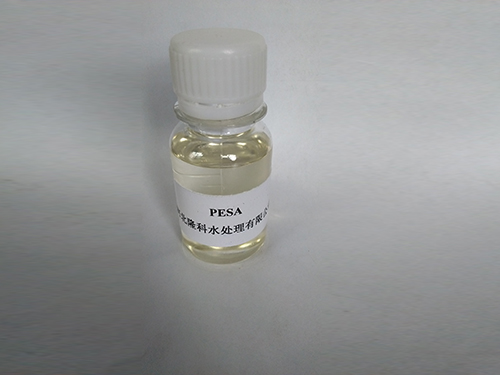nonionic polyacrylamide
Nonionic Polyacrylamide Properties, Applications, and Benefits
Nonionic polyacrylamide (NIPAAm) is a synthetic polymer widely recognized for its unique properties and versatile application across various industries. As a derivative of acrylamide, nonionic polyacrylamide consists of long chains of repeating units that contribute to its structural and functional characteristics. Due to its nonionic nature, this polymer exhibits a high degree of solubility in water and is largely neutral in charge, making it suitable for a variety of applications where ionic strength could interfere with performance.
Properties of Nonionic Polyacrylamide
One of the standout features of nonionic polyacrylamide is its exceptional ability to absorb and retain water. This high water absorption capacity makes it an excellent candidate for use in environments where moisture retention is critical. The molecular weight of NIPAAm can vary significantly, which affects its solubility and effectiveness in different applications. Low molecular weight nonionic polyacrylamide is often used for applications requiring quick dissolution and lower viscosity, while high molecular weight varieties are more effective in forming gels and enhancing viscosity.
Additionally, nonionic polyacrylamide is stable under a wide range of pH levels and temperatures. This stability makes it suitable for diverse conditions in various applications, ensuring that its performance is reliable even when external factors change. Another important property is its biodegradability, particularly when compared to other synthetic polymers, which aligns with the growing environmental awareness and demand for sustainable products.
Applications of Nonionic Polyacrylamide
Nonionic polyacrylamide is utilized in numerous fields, including agriculture, wastewater treatment, petroleum production, and personal care products.
In agriculture, it is often used as a soil conditioner, improving water retention and reducing soil erosion
. By enhancing the soil's physical properties, nonionic polyacrylamide supports plant growth, especially in arid and semi-arid regions where water scarcity is a significant concern.In wastewater treatment, NIPAAm plays a crucial role in flocculation processes. Its ability to bridge particles and form larger aggregates aids in the removal of suspended solids and contaminants from water, thereby improving water quality. The nonionic nature of the polymer ensures minimal interference with the ionic balance of the water, making it an effective choice for various treatment processes.
nonionic polyacrylamide

The petroleum industry also benefits from nonionic polyacrylamide, where it is used in drilling fluids, enhanced oil recovery, and soil stabilization at drilling sites. Its viscosity-modifying properties help maintain the stability of drilling fluids, improving the efficiency of extraction processes and reducing the environmental impact of operations.
Further, nonionic polyacrylamide finds its way into personal care products, where it is utilized as a thickening agent in lotions and creams. Its ability to retain moisture enhances the texture and application of these products, making it a popular choice among formulators.
Benefits of Nonionic Polyacrylamide
The benefits of using nonionic polyacrylamide extend beyond its unique properties and diverse applications. Firstly, the polymer is relatively easy to produce and can be tailored to meet the specific needs of various industries. This flexibility allows manufacturers to customize formulations for specific applications, resulting in improved performance and efficacy.
Moreover, the use of nonionic polyacrylamide can lead to cost savings in operational processes. For instance, its effectiveness in wastewater treatment can reduce the amount of chemicals required for flocculation, lowering overall treatment costs. In agriculture, improved soil conditions can lead to better crop yields, maximizing productivity and profitability for farmers.
Finally, the environmental benefits associated with nonionic polyacrylamide cannot be understated. Its biodegradability and relatively low toxicity compared to other polymers make it a more sustainable option for many applications. As industries strive to adopt greener practices, nonionic polyacrylamide represents a viable solution that aligns with these goals.
Conclusion
In summary, nonionic polyacrylamide is a versatile, efficient, and environmentally friendly polymer with a multitude of applications spanning various industries. Its unique properties, including high water retention, stability across different conditions, and biodegradability, make it an attractive option for addressing contemporary challenges in agriculture, wastewater treatment, petroleum production, and personal care. As research continues to uncover new applications and improve formulations, the significance of nonionic polyacrylamide in contributing to innovative solutions will undoubtedly grow.
-
lk-319-special-scale-and-corrosion-inhibitor-for-steel-plants-advanced-solutions-for-industrial-water-systemsNewsAug.22,2025
-
flocculant-water-treatment-essential-chemical-solutions-for-purification-processesNewsAug.22,2025
-
isothiazolinones-versatile-microbial-control-agents-for-industrial-and-consumer-applicationsNewsAug.22,2025
-
scale-inhibitor-key-solutions-for-water-system-scale-preventionNewsAug.22,2025
-
organophosphonates-versatile-scale-inhibitors-for-industrial-water-systemsNewsAug.22,2025
-
scale-and-corrosion-inhibitor-essential-chemical-solutions-for-water-system-maintenanceNewsAug.22,2025





